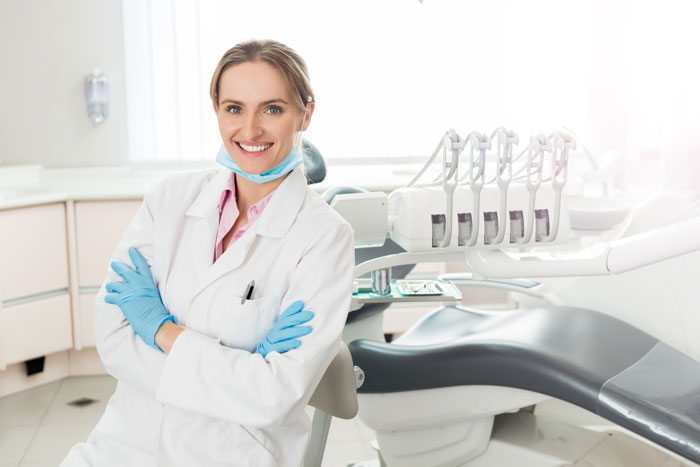Importance of Regular Dental Check-Ups

Regular dental check-ups play an important role in keeping your teeth and gums healthy. Modern dentistry focuses strongly on preventive care, and regular dental exams making sure your oral health is in good condition can avoid costly procedures later.
The American Dental Association (ADA) recommends dental check-ups every six months or as otherwise advised by your dentist. People with an increased risk of dental problems who should see their dentist more frequently include smokers, diabetics, women during pregnancy, and anyone prone to bacterial infections.
The importance of regular dental check-ups is underscored by the fact that you may not notice oral health disorders such as cavities, cancer, and gum disease in the initial stages. Your dentist can detect issues like these to enable early intervention, which gives you the best chance of effective treatment.
When performing your check-up, your dentist will bear in mind your overall medical history. Knowing about existing medical conditions and medication helps your dentist to ensure no complications arise during dental treatment.
Your check-up appointment also allows your dentist or dental hygienist to carry out a professional cleaning (oral prophylaxis).
What Your Dentist Will Look for During Your Check-Up
During your dental exam, your dentist will check your overall oral health. This entails examining how each part of your mouth functions in relation to the others. They will assess your bite (occlusion), teeth alignment, and condition of your jaw bone.
Your check-up will also include:
Looking for Cavities
You may have a cavity without knowing. Once decay works its way into tooth enamel, it can infect the soft pulp inside the tooth, and infection can spread to the root and into the bloodstream. Your dentist will probe your teeth, looking for soft spots. X-rays can reveal cavities between your teeth.
Assessing Enamel and Dentin
Your dentist will be on the alert for signs of yellowing of tooth enamel, which can indicate decay. As well as examining the enamel, your dentist will use X-rays to check the condition of dentin, the layer beneath the enamel.
Examining Your Gums
Your dentist will look for any deep spaces between gums and teeth, which typically indicate gum disease. An annual comprehensive periodontal evaluation (CPE) is recommended by the American Academy of Periodontology (AAP) for all adults. The condition of your gums can also provide clues to your overall health.
Looking for Build-ups of Plaque and Tartar
Besides searching for any signs of cavities and gum infection, your dentist will be on the lookout for accumulations of plaque and tartar, which cause tooth decay and gum disease. If plaque is allowed to build up, it forms tartar, which is impossible to remove by brushing and flossing.
Checking for Cancer
Problems with your throat, neck, tongue, or face could point to cancer. More than 100 cases of oral cancer are diagnosed in the U.S. every day. Early treatment significantly improves the likelihood of a successful outcome, but most oral cancers are not diagnosed until the later stages. Your dentist will look for issues such as ulcers, lesions, or sores in the mouth that don't heal, blocked salivary glands, and discolored patches on the tongue.
Checking for Bad Breath
Bad breath (halitosis) can be a sign of oral problems such as gum disease, a yeast infection, tooth decay, or dry mouth. Bad breath can also be a symptom of respiratory or sinus infections.
Looking for Indications of a Sinus Infection
You may think you have a dental problem when in fact you’re suffering from sinusitis – infection of the nasal cavities. Your dentist may ask you whether your face hurts when you tilt your head downward – a typical symptom of sinusitis.
Checking for Signs of Diabetes
Signs of diabetes may be present in the gums because of the decreased ability to fight bacterial infection that the condition causes. Your dentist will be looking for abscesses, swelling, and other gum problems that don’t respond to normal treatment.
Importance of Professional Cleanings
Professional cleanings as part of your routine dental exam remove bacterial plaque and tartar, which can still build up despite regular brushing and flossing.
Your dentist or dental hygienist will use special instruments to gently remove these deposits – including those in hard-to-reach areas – without damaging your teeth. Once plaque has calcified to form tartar, it can only be removed by a dental professional.
Besides removing plaque and tartar, a cleaning will also include:
- Polishing your teeth.
- Flossing between your teeth.
- Reviewing your brushing and flossing techniques
Professional cleanings help to prevent cavities, tooth loss, and gum disease. They also give you fresher breath and a brighter smile. Cleanings every six months are usually sufficient but may be required more often, depending on the state of your oral health.
To get the most out of your professional cleaning, it’s important to maintain a routine of brushing your teeth twice a day and flossing daily. The bacteria that attack your teeth and gums are persistent and can quickly develop even after professional hygiene measures.
Why Regular Dental Check-Ups Are So Important
Having to visit your dentist twice a year may not be the appointment you most look forward to, but it’s one of the most important. Regular dental check-ups incorporating cleanings can improve your smile and prevent tooth decay and gum disease. They can also save you money in the long run by reducing the risk of dental problems that would require costly treatments.
It may be tempting to put off dental check-ups when you’re busy with other matters but making sure your teeth and gums are kept in good condition can avoid the inconvenience of lengthy, expensive treatment further down the road.
A further reason why regular dental check-ups are important is that the state of your oral health can provide warning signs of problems with your overall wellbeing, and dental problems can impact other areas of your body if undetected.



